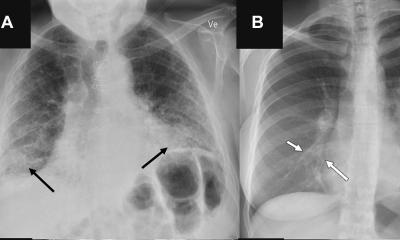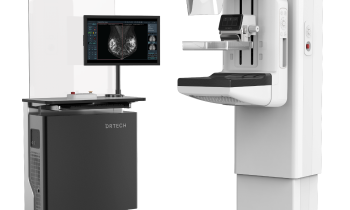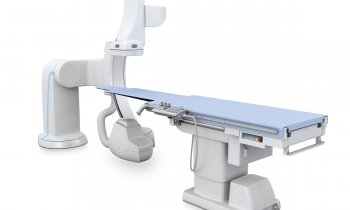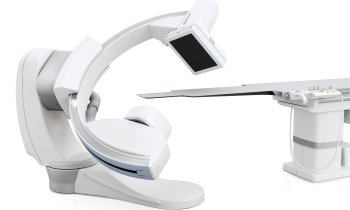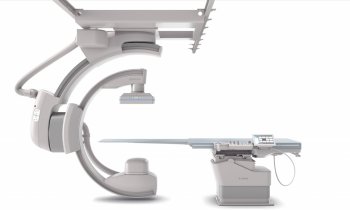© Sebastian Kaulitzki – stock.adobe.com
Article • Respiratory health
Pulmonary embolism in pregnancy: diagnostic pathways under scrutiny
Pulmonary embolism (PE) remains one of the leading causes of maternal mortality. At the French Thoracic Society Spring Days in May, Dr Aurélie Dehaene, radiologist at European Hospital in Marseille, France, reviewed diagnostic strategies for suspected PE during pregnancy, with a focus on clinical algorithms and optimized imaging protocols.
By Mélisande Rouger
‘Venous thromboembolic disease is common in pregnancy and peaks during the postpartum period,’ she said. 'Physiological changes associated with gestation significantly increase the risk of thrombosis.’ These include vascular compression due to uterine enlargement, hormone-induced vasodilation, and hypercoagulability – elements that align with Virchow’s triad: endothelial injury, stasis, and a pro-thrombotic state. Additional pregnancy-related factors such as preeclampsia, in vitro fertilization, postpartum haemorrhage, or caesarean section further increase this risk, alongside general risk factors like obesity, smoking, and advanced maternal age.
Clinical overlap and diagnostic hesitation

Photo: Mélisande Rouger
The overlap of PE symptoms with normal pregnancy complaints complicates clinical evaluation. ‘Dyspnea and peripheral oedema are common and non-specific,’ Dehaene noted. This contributes to diagnostic uncertainty and reluctance to prescribe radiation-based imaging, despite the condition’s severity.
Yet both underdiagnosis and overtreatment carry significant risks. ‘Missing a PE is dangerous, but so is unnecessarily anticoagulating a patient,’ she warned.
To support diagnostic accuracy, clinicians now rely on structured algorithms. The two most referenced models were developed in 2019 by the European cardiology and respiratory societies and the Artemis group, respectively. Both integrate pre-test clinical scoring, D-dimer assessment, and imaging protocols.
Adapting clinical probability tools
The European approach proposes a modified Geneva score adapted for pregnant patients. Criteria include age, recent immobilization or surgery, unilateral leg pain, history of PE or DVT, haemoptysis, leg swelling or tenderness, and tachycardia. A score above seven indicates high clinical probability.
In combination, D-dimer levels help stratify risk. ‘If D-dimers are low and clinical suspicion is low, PE can be safely ruled out without imaging,’ Dehaene explained. However, the test’s performance decreases in the third trimester due to physiologic D-dimer elevation.
A prospective study involving 141 pregnant women validated this algorithm, though it showed better performance when supplemented with venous compression ultrasound and CT pulmonary angiography (CTPA).
Imaging: structured and stepwise
When further workup is needed, a chest X-ray is typically performed first, to rule out alternative diagnoses. If signs of deep vein thrombosis (DVT) are present, lower limb Doppler ultrasound is indicated. ‘A positive Doppler result confirms venous thromboembolism and eliminates the need for thoracic imaging,’ Dehaene said.
'Pregnancy increases cardiac output by up to 50%, creating specific imaging challenges
Aurélie Dehaene
In the absence of clear DVT findings, either CTPA or ventilation/perfusion (V/Q) scintigraphy may be used depending on local expertise and radiographic results. Scintigraphy is preferred when chest X-ray is normal; otherwise, CTPA is recommended.
CTPA optimization for pregnancy
'Pregnancy increases cardiac output by up to 50%, creating specific imaging challenges,’ Dehaene stated. Protocols must be adapted to reduce fetal exposure while ensuring diagnostic quality.
Scanning should cover only from the aortic arch to the diaphragmatic dome, omitting apical regions. Contrast injection should use 120 mL of iodinated agent at 4–6 mL/s, with a concentration of 350–360 mg iodine/mL. Bolus tracking is triggered in the pulmonary artery, with thresholds between 120 and 150 HU. ‘A simple breath-hold – not deep inspiration – is preferred to limit motion artefacts,’ she advised.
There is no established contraindication for iodinated contrast during pregnancy. Although potential fetal thyroid risks are often cited, no evidence of clinical hypothyroidism has been demonstrated. ‘Paediatric teams may monitor thyroid function as a precaution,’ she said. Regarding breastfeeding, only a few agents require temporary interruption, and usually no longer than four hours.
Radiation safety and legal framework
CTPA, when optimized, typically exposes the fetus to less than 1 mGy – well below the 100 mGy threshold for teratogenic risk. Dose parameters such as the dose-length product (DLP) and computed tomography dose index (CTDI) must be recorded in the radiology report. In France, these figures must also be communicated to the IRSN if the fetus is in the scan field.
‘The fetal dose is often negligible, particularly for thoracic exams where the uterus is outside the radiation field,’ Dehaene said. ‘Nevertheless, radiation safety regulations and informed consent procedures must be strictly followed.’
Role of scintigraphy and diagnostic limits
Scintigraphy remains an acceptable alternative when chest radiograph is normal, offering diagnostic performance comparable to CTPA. However, it lacks the ability to identify alternative diagnoses and may also be inconclusive in some cases.
CT, in contrast, provides broader diagnostic coverage and allows for evaluation of embolic burden. ‘Still, artefacts and suboptimal contrast enhancement can reduce image quality,’ she acknowledged.
Optimizing safety and certainty
Clear protocols, tailored imaging, and adherence to legal requirements are key to ensuring safe and effective diagnosis of PE in pregnant patients. For Dehaene, the message is clear: ‘Know the algorithms, justify the indication, adapt the protocol, and document everything.’
By aligning clinical vigilance with technical precision, radiologists play a central role in improving maternal outcomes in suspected PE. The stakes are high – but with informed strategy, risks can be controlled.
26.06.2025





